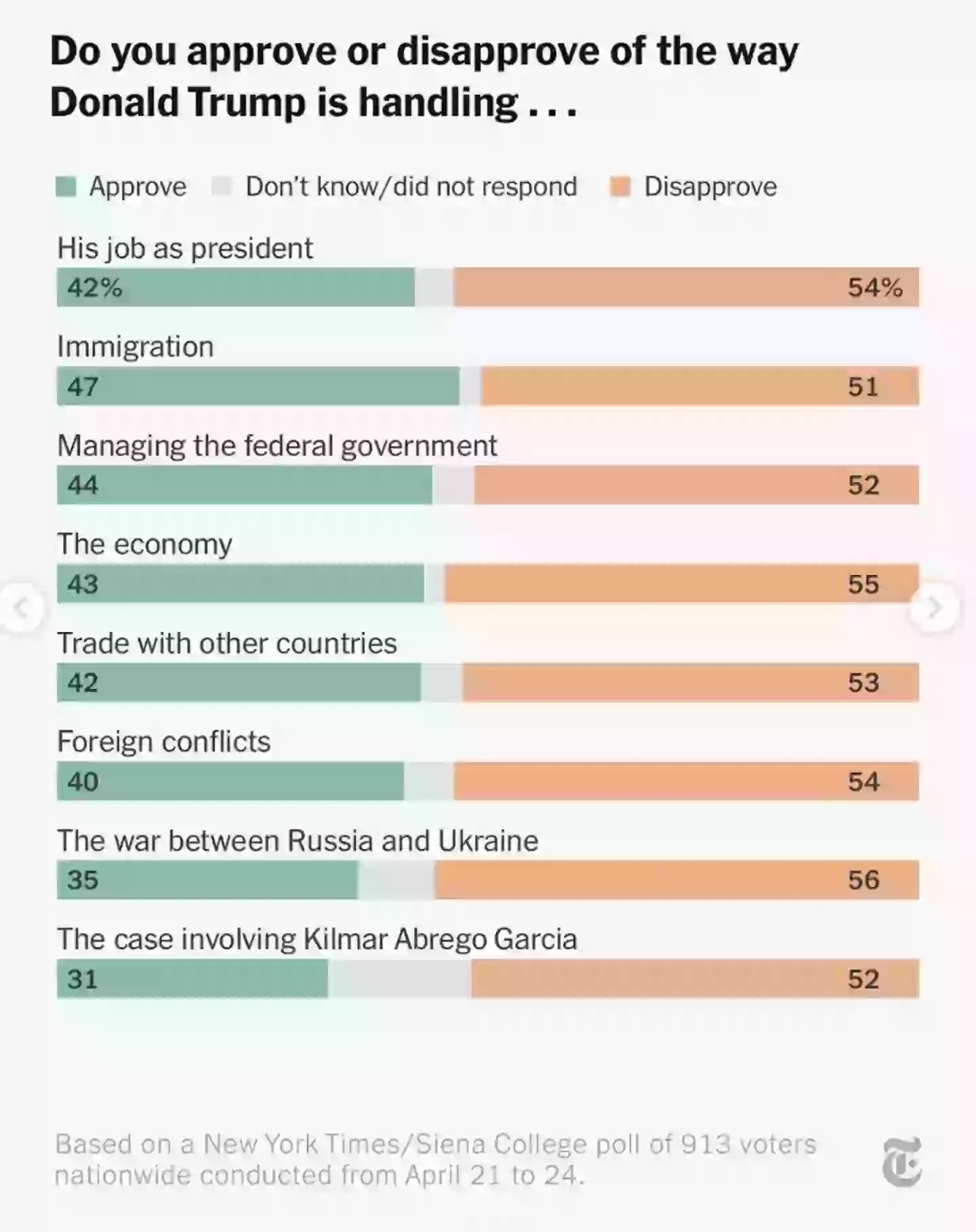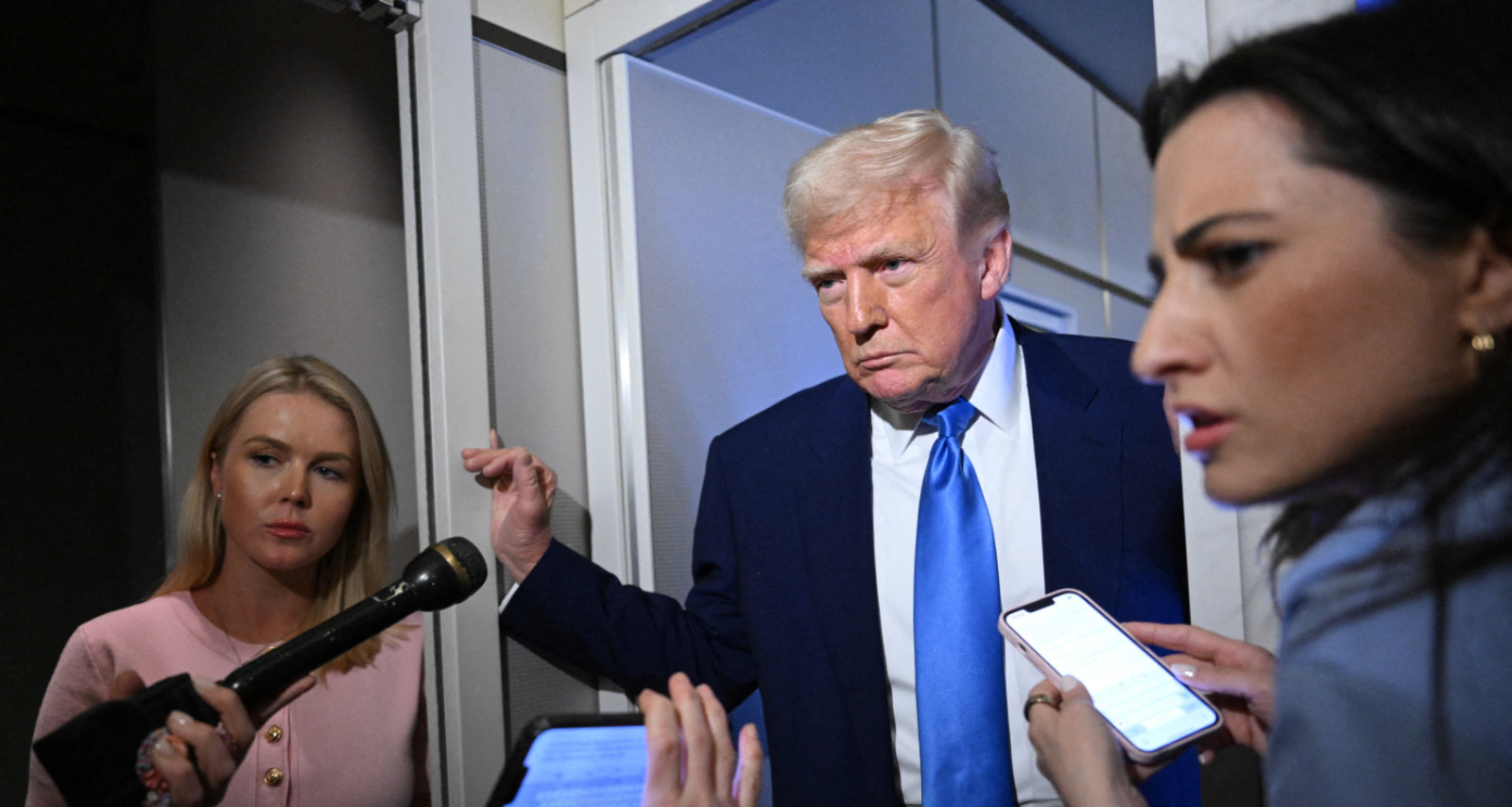Trump Responds to Disappointing Approval Ratings with Fiery Remarks on Polls and Media Bias
Introduction
As former President Donald Trump approaches his 100th day back in office after winning the 2024 election, new polling data has sparked significant controversy and debate. A series of polls conducted by some of the nation’s most prominent news organizations, including ABC News, The Washington Post, and The New York Times, revealed disappointing approval ratings for Trump. The findings suggest that Trump is facing some of the lowest 100-day job approval ratings in recent history, a result that stands in stark contrast to the confidence he exhibited in his return to the White House.
In response to these polls, Trump has once again taken to social media, using his platform, Truth Social, to blast the results and accuse the media of bias and manipulation. Trump’s remarks, fueled by frustration, have reignited discussions about the accuracy of polling, the role of media in shaping public opinion, and the state of his presidency as he enters his second term.
A Troubling 100-Day Milestone
After returning to the White House following his victory in the 2024 presidential election, Donald Trump marked a historic moment as he prepared to celebrate his 100th day back in office on April 29, 2025. This milestone, which typically serves as a benchmark for evaluating the early success of a president’s term, has been marred by disappointing polling numbers that put Trump’s approval rating at a low point compared to his predecessors.

Polling data released by a joint ABC News and Washington Post survey, as well as The New York Times, revealed a significant gap between the public’s approval of Trump’s leadership and the ambitions he had set for his second term. According to the ABC News and Washington Post poll, 55 percent of respondents expressed disapproval of Trump’s handling of the presidency, making his 100-day approval rating the lowest for any president in the past 80 years.
The New York Times and Siena College poll painted an even bleaker picture, with only 42 percent of respondents approving of Trump’s performance so far. The survey also noted that 66 percent of those surveyed described his second term as “chaotic,” signaling a deep public concern over the direction of his presidency.
Trump’s Busy Start: Policies, Orders, and Controversy
Despite the negative polling, it is clear that Trump has remained active in pursuing his political agenda. Since returning to the presidency, Trump has been relentless in implementing policies that have sparked heated debate across the nation. From addressing issues in education to targeting historical monuments, Trump has used executive orders to enact sweeping changes. These moves, however, have faced significant backlash, particularly from opponents who argue that some of his policies undermine important societal values.
One of Trump’s most contentious decisions has been his approach to tariffs and trade policies, which some analysts have argued could have a lasting negative impact on the U.S. economy. His administration has also pushed forward with changes to education and the national sports landscape, aiming to reshape the American cultural narrative. While these policies are consistent with his populist platform, their effectiveness and public reception remain hotly contested.
Despite these actions, the public’s perception of Trump’s effectiveness has been marred by growing discontent. The polls reveal that many Americans feel his presidency has lacked the cohesive vision and results that are often expected in the early days of an administration. The dissonance between Trump’s actions and the public’s approval underscores a critical gap between his base and the wider electorate.
Trump’s Response: Accusations of ‘Fake News’ and Media Bias
As the dismal approval ratings made headlines, Donald Trump turned to Truth Social to issue a passionate response. In his post, he accused the polling organizations of manipulating results to paint a negative picture of his presidency. He specifically called out The New York Times and the ABC/Washington Post polls, alleging that they had skewed the data to create a false narrative.
Citing John McLaughlin, a pollster Trump has previously endorsed, the former president criticized the methodology of the polls, claiming that they had underrepresented Trump supporters. According to McLaughlin, the New York Times poll included only 37 percent of Trump 2024 voters, while the ABC/Washington Post poll included just 34 percent. Trump contended that these numbers were deliberately skewed in order to produce a negative result.
“Didn’t we win the popular vote with 50%?” McLaughlin asked in his own Twitter post, a comment Trump echoed in his own online tirade. Trump went on to accuse the media organizations behind the polls of producing “fake news,” calling them “fake polls from fake news organizations” and alleging that their goal was to manipulate public perception.
The Claim of Election Fraud and ‘Trump Derangement Syndrome’
Trump’s fiery response didn’t stop at accusing media outlets of bias. In typical Trump fashion, he lashed out at the media for what he described as a broader campaign to discredit him. He argued that the polling organizations behind the negative surveys should be investigated for election fraud, asserting that they were deliberately misleading the public.
“They are Negative Criminals who apologize to their subscribers and readers after I WIN ELECTIONS BIG, much bigger than their polls showed I would win, lose a lot of credibility, and then go on cheating and lying for the next cycle, only worse,” Trump wrote.
The former president also revived the term “Trump Derangement Syndrome,” a phrase he’s used in the past to describe his critics in the media. He argued that the media’s relentless negativity toward him was rooted in irrational hatred, accusing them of focusing on his shortcomings while ignoring his successes, particularly at the U.S. border.
In his post, Trump proclaimed that the media “suffer from Trump Derangement Syndrome” and that their obsession with undermining his presidency was both unfair and detrimental to the country. “THEY ARE SICK,” he said, “almost only write negative stories about me no matter how well I am doing (99.9% at the Border, BEST NUMBER EVER!), AND ARE TRULY THE ENEMY OF THE PEOPLE!”
This fierce rhetoric, although not new, reveals Trump’s unrelenting war with the media and his continued belief that the press is biased against him. For Trump, these polling numbers aren’t just a reflection of his administration’s performance; they’re a symptom of a deeper cultural and political divide between him and the media.
Poll Methodology and Criticism
In response to Trump’s claims of polling bias, both The New York Times and ABC/Washington Post defended their methodologies. The New York Times explained that its poll participants were selected from a list of registered voters, with particular attention paid to ensuring that demographic groups that are often underrepresented in surveys were adequately reflected. This effort was made to ensure that the results represented the broader voting population, rather than just a narrow segment of the electorate.
The ABC/Washington Post poll was based on a random sample of 2,464 adults, with partisan divisions balanced at 30 percent Democrat, 30 percent Republican, and 29 percent independent voters. Despite the apparent balance, Trump’s supporters still argue that the sample was flawed, with too few Trump voters being included in the survey.
These criticisms raise important questions about the accuracy of polling and the extent to which media outlets shape public perception. While it’s true that poll methodologies can influence results, it’s also important to consider whether Trump’s deepening disdain for the media is contributing to his inability to accept criticism, even when the data suggests a widespread dissatisfaction with his presidency.
Conclusion: A Fractured Presidency and the Road Ahead
As Donald Trump approaches his 100th day back in office, the approval ratings revealed by these polls signal a significant challenge for his administration moving forward. With a history of combative rhetoric and disdain for the media, Trump’s response to these ratings fits a familiar pattern of defiance and distrust.
However, the public’s reaction to his presidency remains complicated. While he maintains a strong base of support, particularly among his core voters, the broader electorate appears increasingly skeptical of his leadership. This division presents a considerable obstacle as Trump looks ahead to the rest of his second term and potentially to his 2028 campaign.
Ultimately, the next steps for Trump will involve navigating this fractured political landscape, continuing to push forward with his policies while attempting to regain the trust of voters who remain unconvinced. For now, the polls may reflect a setback, but for Trump, they are just another battleground in his ongoing war with the media and his critics. The question remains: will his base continue to rally behind him, or will these early challenges signal the beginning of a more difficult political road ahead?

Adrian Hawthorne is a celebrated author and dedicated archivist who finds inspiration in the hidden stories of the past. Educated at Oxford, he now works at the National Archives, where preserving history fuels his evocative writing. Balancing archival precision with creative storytelling, Adrian founded the Hawthorne Institute of Literary Arts to mentor emerging writers and honor the timeless art of narrative.
